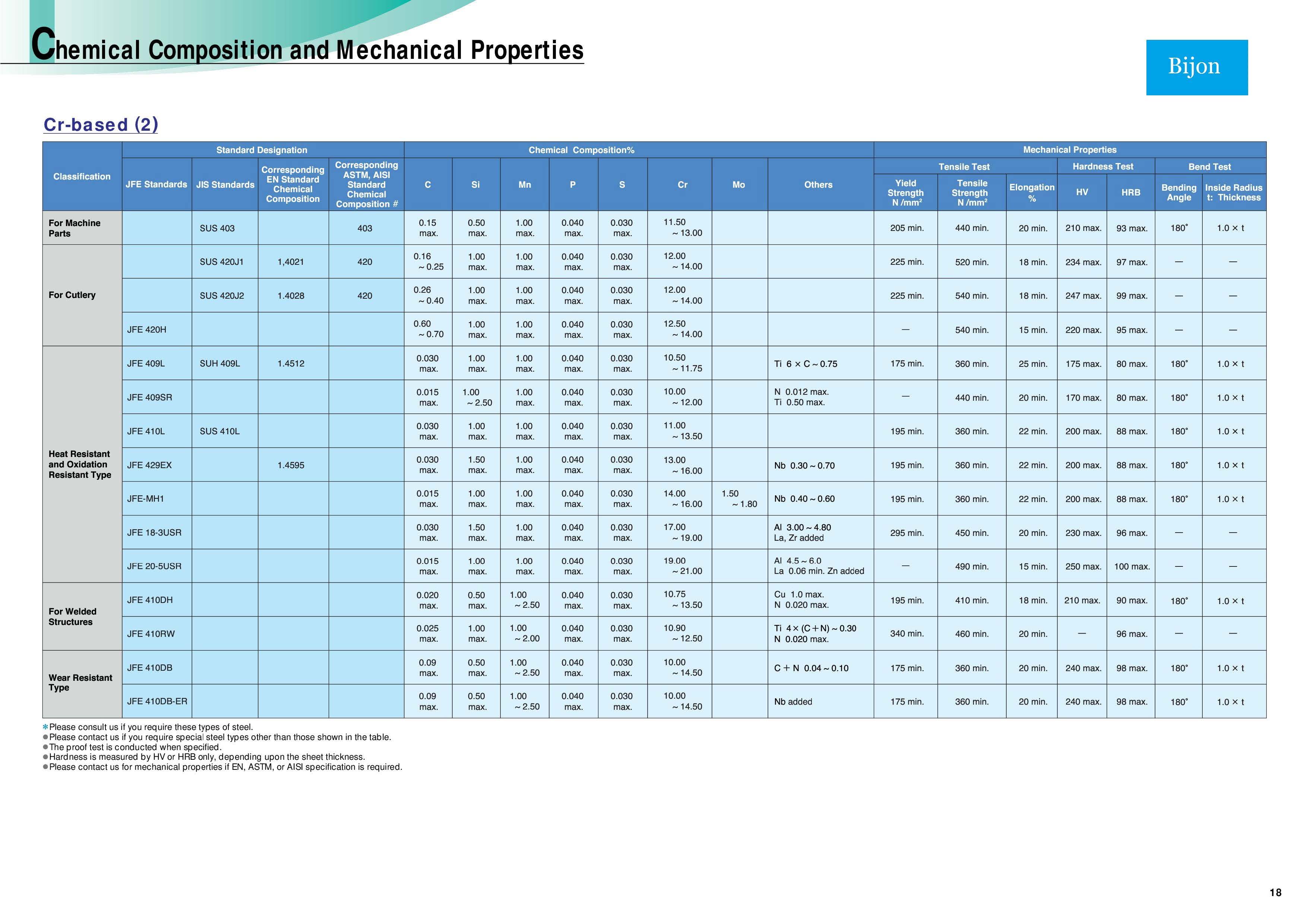These are the most frequently used types of stainless steels. Austenitic stainless steels tend to have a high chromium content compared to other steel alloys, giving them a higher resistance to corrosion. Another common characteristic of austenitic stainless steel alloys is that they tend to be non-magnetic—though they may become magnetic after cold working.
The second most common form of stainless steel after austenitic alloys. As the name implies, ferritic stainless steel is magnetic. These alloys can be hardened through cold working. They also tend to be less expensive because of their reduced nickel content.
The least common category of stainless steel alloy. Their corrosion resistance tends to be lower than either ferritic or austenitic alloys, but they have a high hardness. Martensitic stainless steel alloys are often ideal for applications requiring extraordinarily high tensile strength and impact resistance. When said applications also require corrosion resistance, these alloys may be used with a protective polymer coating.
